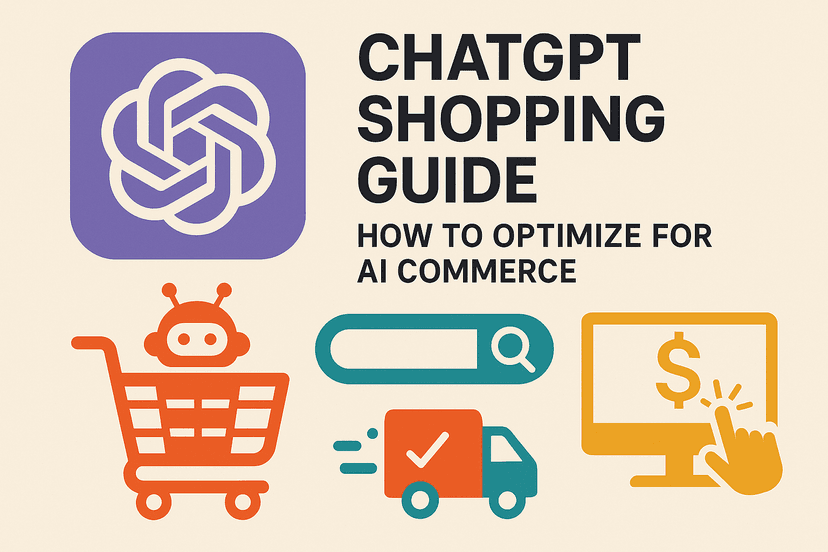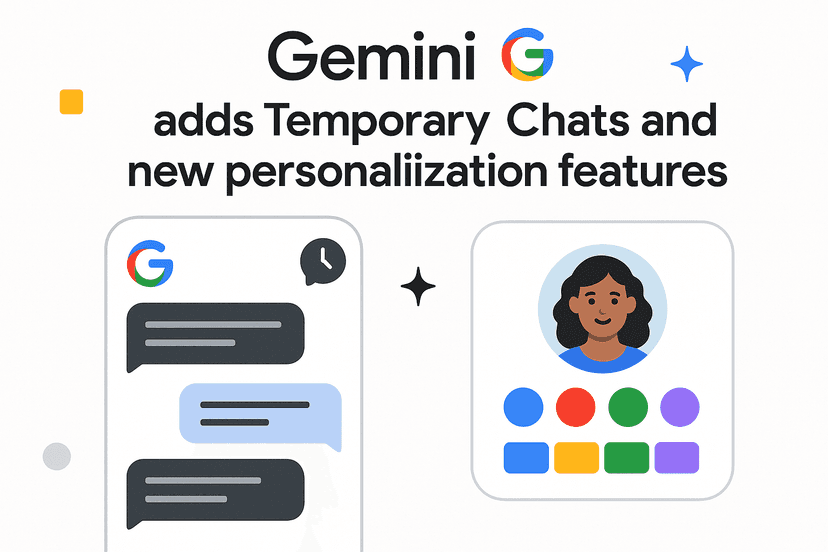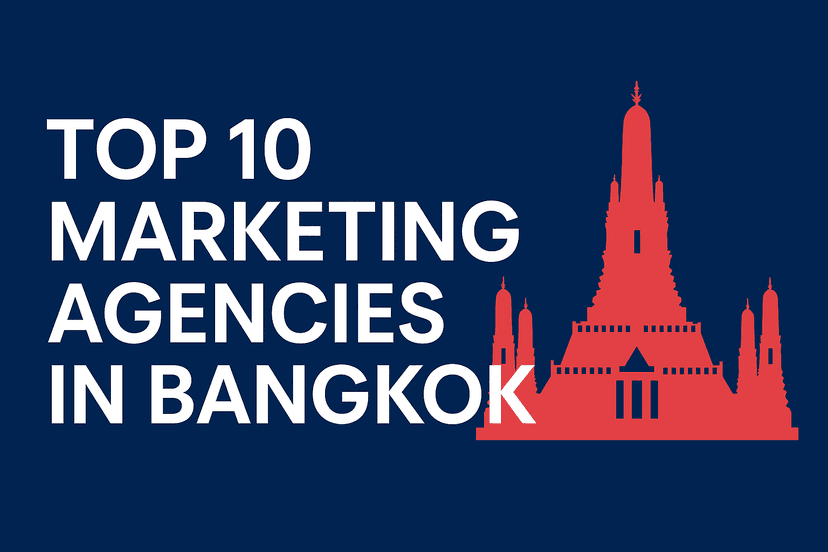Introduction
As artificial intelligence continues to reshape how people search for and consume information, getting your brand mentioned in ChatGPT has become a powerful marketing objective. Unlike traditional SEO where you optimize for Google’s ranking factors, getting your brand to appear in ChatGPT’s responses requires a different approach—one that combines Content Marketing, technical optimization, and an understanding of how large language models like GPT work.
Whether you’re a startup looking to increase brand awareness or an established company aiming to maintain relevance in the AI era, this comprehensive guide will walk you through professional strategies to get your brand mentioned in ChatGPT’s responses. The goal isn’t just to game the system but to establish your brand as a genuinely authoritative source that AI systems naturally reference when providing information to users.
Let’s dive into why this matters and how you can strategically position your brand to appear in ChatGPT’s responses like a professional marketer would.
Why Brand Mentions in ChatGPT Matter
Before diving into tactics, it’s important to understand why securing brand mentions in ChatGPT matters for your marketing strategy:
Massive User Base: ChatGPT has amassed over 100 million users, becoming one of the fastest-growing consumer applications in history. When people ask questions related to your industry, having your brand appear in responses creates invaluable exposure.
Trust Transfer: When ChatGPT mentions your brand as a solution or example, it carries an implicit endorsement. Users often perceive information from AI systems as objective and well-researched, lending credibility to mentioned brands.
Future-Proofing Your Marketing: As AI assistants become more integrated into daily life, optimizing for them now puts you ahead of competitors who are still focused exclusively on traditional search engines.
Conversational Discovery: Unlike traditional search where users must click through to your website, ChatGPT can introduce your brand directly in conversation, creating a seamless discovery experience.
Reduced Dependency on Paid Advertising: Organic mentions in ChatGPT can supplement your paid marketing efforts, potentially reducing customer acquisition costs over time.
The value proposition is clear: as more users turn to AI assistants for information and recommendations, having your brand appear naturally in these conversations becomes increasingly crucial for visibility and relevance.
Understanding How ChatGPT Works
To effectively get your brand mentioned in ChatGPT, you need to understand how it generates responses:
Training Data: ChatGPT’s knowledge comes primarily from its training data, which includes vast portions of the internet (books, articles, websites, forums) up to a specific cutoff date. For GPT-4, this cutoff is around April 2023.
Pattern Recognition: Rather than directly quoting sources, ChatGPT recognizes patterns in how information is presented and generates responses based on those patterns. This means that widely referenced brands in connection with specific topics are more likely to be mentioned.
Prioritization of Authority: ChatGPT tends to reference well-established sources and commonly mentioned entities when providing examples or recommendations.
No Real-Time Web Access (with exceptions): Standard ChatGPT doesn’t actively search the web when answering questions. However, certain versions (like those with browsing capabilities or plugins) can access more current information.
Contextual Understanding: ChatGPT tries to understand the context of questions and provide relevant information, including brand references when they’re directly applicable to the query.
With this understanding of how ChatGPT works, let’s explore concrete strategies to increase the likelihood of your brand being mentioned in its responses.
Strategy 1: Create High-Authority Content
Creating high-authority content is the foundation of getting your brand mentioned in ChatGPT. Since ChatGPT’s training includes web content, having comprehensive, authoritative information about your brand online increases the chances it will be referenced.
Develop a Robust Content Hub
Create a central repository of in-depth content about your brand, products, and industry expertise:
-
Comprehensive Product Pages: Develop detailed, information-rich pages for each product or service, including specifications, use cases, and unique selling points.
-
Educational Blog Content: Publish regular blog posts that demonstrate your expertise and naturally incorporate your brand name throughout. Focus on solving problems your target audience faces.
-
Resource Centers: Create downloadable guides, whitepapers, case studies, and research that position your brand as a thought leader.
-
Glossaries and Wikis: Develop comprehensive glossaries of industry terms or wiki-style resources that include references to your products or services in context.
Focus on Expertise, Authoritativeness, and Trustworthiness (E-A-T)
When creating content, emphasize these quality signals:
-
Showcase Author Expertise: Have content written by subject matter experts and highlight their credentials.
-
Back Claims with Data: Include research, statistics, and citations to establish credibility.
-
Regular Updates: Keep content fresh and accurate with periodic updates.
-
Transparent Company Information: Make information about your company’s history, mission, team, and credentials easily accessible.
By developing high-quality, authoritative content, you’re creating the source material that increases the likelihood of ChatGPT referencing your brand when answering relevant queries.
Strategy 2: Get Featured on Third-Party Sites
While your own website is important, mentions of your brand across the broader web significantly increase the chances of ChatGPT referencing your company. Here’s how to expand your digital footprint:
Earn Media Coverage
-
Press Releases: Distribute newsworthy announcements about product launches, significant milestones, or industry innovations using Press Release Distribution.
-
Media Outreach: Develop relationships with journalists and offer expert commentary on industry trends.
-
Thought Leadership: Submit opinion pieces or expert columns to industry publications.
Leverage Industry Directories and Review Sites
-
Claim Business Listings: Ensure your brand is listed accurately on relevant business directories.
-
Cultivate Reviews: Encourage satisfied customers to leave reviews on prominent platforms like G2, Capterra, Trustpilot, or industry-specific review sites.
-
Get Featured in “Best of” Lists: Work to get your products or services included in roundups like “Best Marketing Tools” or “Top SaaS Solutions.”
Guest Posting and Expert Contributions
-
Write for High-Authority Publications: Contribute guest posts to respected websites in your industry, making sure your brand is mentioned contextually.
-
Participate in Expert Roundups: When industry publications compile expert opinions, ensure your brand representatives are included.
-
Podcast Appearances: Have company leaders appear as guests on industry podcasts, which often generate transcripts that become part of the web’s text corpus.
The more your brand is mentioned across diverse, authoritative websites, the stronger the association becomes in the training data, increasing the likelihood of ChatGPT referencing your brand when relevant topics arise.
Strategy 3: Leverage Technical SEO
Technical optimization helps ensure that content about your brand is properly indexed and understood by AI systems:
Implement Schema Markup
Schema markup provides explicit signals about your brand identity:
-
Organization Schema: Implement organization markup that clearly identifies your company name, logo, and other brand information.
-
Product Schema: For e-commerce sites, use product schema to clearly label product names, descriptions, and brand affiliations.
-
Review Schema: Showcase customer reviews and ratings that mention your brand name.
Optimize Site Structure
-
Clear Navigation: Create a logical site structure that makes it easy to understand your brand’s offerings.
-
Internal Linking: Build a strong internal linking structure that reinforces the connection between your brand name and key topics.
-
XML Sitemaps: Maintain comprehensive, updated XML sitemaps that help ensure all brand content is discovered.
Technical Foundations
-
Mobile Optimization: Ensure your site is fully responsive and mobile-friendly.
-
Site Speed: Optimize loading times to provide a better user experience.
-
Secure Browsing: Implement HTTPS for all pages to signal trustworthiness.
These technical optimizations help ensure that content about your brand is accessible and correctly interpreted by systems that may contribute to ChatGPT’s knowledge base.
Strategy 4: Create Custom GPTs
For more direct control over how your brand appears in ChatGPT interactions, consider creating custom GPTs using OpenAI’s GPT Builder:
Developing Brand-Specific GPTs
-
Product Specialist GPT: Create a custom GPT that specializes in your products or services, providing detailed information and recommendations.
-
Industry Expert GPT: Develop a GPT that addresses broader industry questions while naturally incorporating your brand as a solution.
-
Customer Support GPT: Build a GPT that helps users troubleshoot issues with your products, reinforcing brand familiarity.
Optimizing Custom GPTs
-
Comprehensive Instructions: Provide detailed instructions that help the GPT accurately represent your brand and products.
-
Knowledge Files: Upload brand documentation, product information, and other relevant materials to enhance the GPT’s specific knowledge.
-
Conversation Design: Craft example conversations that model how you want your brand to be represented.
Custom GPTs can be shared publicly or kept private for specific use cases, giving you a direct channel to ensure your brand is mentioned appropriately in relevant contexts.
Strategy 5: Build ChatGPT Plugins
For businesses with technical resources, developing a ChatGPT plugin offers another avenue to get your brand mentioned:
Plugin Development Benefits
-
Direct Integration: Your brand becomes directly accessible when users engage with ChatGPT.
-
Real-Time Data: Provide up-to-date information about your products or services.
-
Functional Value: Offer utility that naturally incorporates your brand into user workflows.
Plugin Creation Process
-
Identify User Needs: Determine what value your plugin can provide that aligns with your brand.
-
API Development: Create the necessary backend functionality to power your plugin.
-
Manifest Creation: Develop the plugin manifest that describes your brand and functionality.
-
Testing and Iteration: Refine your plugin based on user interactions and feedback.
When users install and use your plugin, your brand becomes part of their ChatGPT experience, creating natural opportunities for brand mentions in conversations.
Strategy 6: Optimize for ChatGPT’s Browsing Feature
When users enable ChatGPT’s browsing capability, it can access and reference current web content. Optimizing for this feature requires additional considerations:
Create Browse-Friendly Content
-
Clear Headers and Structure: Use descriptive headings and logical content organization that makes information easy to parse.
-
Summarizable Content: Structure key information in a way that’s easy to extract and summarize.
-
FAQs and Question-Based Content: Create content that directly answers questions users might ask ChatGPT.
Technical Considerations for Browsing
-
Avoid Blocking ChatGPT: Ensure your robots.txt file doesn’t block AI crawlers unless you have specific reasons to do so.
-
Implement Canonical Tags: Properly use canonical tags to indicate preferred versions of pages.
-
Structured Data: Use structured data to help ChatGPT understand and extract information about your brand correctly.
By optimizing for ChatGPT’s browsing capability, you increase the chances of your brand being referenced when users ask relevant questions with browsing enabled.
Strategy 7: Establish Topical Authority
Becoming the definitive resource on topics related to your brand increases the likelihood of ChatGPT mentioning you when those topics arise:
Develop Comprehensive Topic Clusters
-
Pillar Content: Create in-depth guides on core topics related to your products or industry.
-
Supporting Content: Develop related articles that explore subtopics in detail.
-
Internal Linking: Connect these pieces with strategic internal links that reinforce your authority on the subject.
Demonstrate Expertise Through Depth
-
Case Studies: Publish detailed case studies that show real-world applications of your products or services.
-
Original Research: Conduct and publish original research that advances understanding in your field.
-
Technical Guides: Create comprehensive how-to content that demonstrates deep knowledge.
When you own a topic in the digital space, ChatGPT is more likely to reference your brand when users ask questions about that topic.
Strategy 8: Leverage Custom Data for Business Users
For businesses using ChatGPT Teams or Enterprise versions, custom data offers a direct path to ensure your brand appears in responses:
Upload Brand-Related Documents
-
Product Documentation: Upload detailed product guides, specifications, and documentation.
-
Internal Knowledge Bases: Provide access to company wikis and knowledge bases.
-
Training Materials: Include customer-facing training materials that reference your brand.
Create Custom Instructions
-
Brand Guidelines: Establish parameters for how your brand should be referenced.
-
Preferred Terminology: Specify the exact terms and descriptions you want used for your products or services.
-
Use Case Examples: Provide examples of how your brand solves specific problems.
This approach ensures that when team members or customers interact with your custom ChatGPT instance, your brand is consistently and accurately represented in responses.
Measuring Success: How to Track ChatGPT Brand Mentions
Measuring your success in getting your brand mentioned in ChatGPT requires some creative approaches:
Direct Testing Methods
-
Query Sampling: Regularly test a set of industry-related queries to see if and how your brand is mentioned.
-
Competitor Comparison: Compare how often your brand is mentioned versus competitors for similar queries.
-
Context Analysis: Evaluate the context in which your brand appears—is it positioned as a leader, an example, or just one option among many?
Indirect Measurement Approaches
-
Referral Traffic: Monitor for increases in “direct” or “no referrer” traffic that might indicate users finding your brand through ChatGPT.
-
Brand Search Volume: Track changes in people searching specifically for your brand name, which might indicate discovery through ChatGPT.
-
Customer Surveys: Ask new customers how they discovered your brand, including ChatGPT as an option.
By establishing baseline measurements and tracking changes over time, you can gauge the effectiveness of your efforts to get your brand mentioned in ChatGPT.
Case Studies: Brands Successfully Appearing in ChatGPT
Looking at examples of brands that frequently appear in ChatGPT responses can provide valuable insights:
Software and Tech Products
Tech products like Canva, HubSpot, and Salesforce often appear in ChatGPT responses about marketing tools or CRM systems. These companies have:
- Extensive educational content about their product categories
- Strong presence on review sites and industry comparisons
- Clear product differentiation that makes them relevant examples
Consumer Products
Brands like Dyson, Tesla, and Apple frequently appear in product category discussions because they:
- Have distinctive features that make them useful examples
- Generate significant online discussion and reviews
- Maintain comprehensive product information online
Service Businesses
Companies like Marriott, FedEx, and H&R Block appear in service-related queries because they:
- Clearly define their service offerings online
- Maintain robust FAQ and support documentation
- Have significant market presence that generates online mentions
Studying these successful examples reveals that consistent, widespread, authoritative online presence is key to appearing in ChatGPT responses.
Common Mistakes to Avoid
As you work to get your brand mentioned in ChatGPT, avoid these common pitfalls:
Keyword Stuffing
- The Problem: Excessively repeating your brand name in content in an unnatural way.
- The Solution: Focus on creating genuinely valuable content where brand mentions occur naturally and contextually.
Neglecting Off-Site Presence
- The Problem: Focusing exclusively on your own website while ignoring third-party mentions.
- The Solution: Develop a balanced strategy that includes earning mentions across various authoritative platforms.
Ignoring Content Quality
- The Problem: Prioritizing quantity over quality in content creation.
- The Solution: Invest in fewer, higher-quality pieces that demonstrate true expertise and value.
Overlooking Technical Foundations
- The Problem: Creating great content but neglecting the technical aspects that make it accessible.
- The Solution: Ensure your content is technically sound, properly structured, and easily crawlable.
Expecting Immediate Results
- The Problem: Becoming discouraged when brand mentions don’t appear immediately.
- The Solution: Recognize that building the digital presence required for AI mentions takes time and consistent effort.
By avoiding these mistakes and taking a strategic, patient approach, you’ll increase your chances of success in the long term.
Future of Brand Mentions in AI
As AI technology evolves, strategies for securing brand mentions will also change. Here’s what to watch for:
Emerging Trends
-
Multimodal AI: As AI systems become better at understanding images, video, and audio, creating rich media content about your brand will become increasingly important.
-
Real-Time Information: AI systems are moving toward more real-time information access, making recent content and fresh mentions more valuable.
-
User Personalization: AI responses may become more personalized to users, potentially prioritizing brands they’ve previously engaged with.
Preparing for the Future
-
Diversify Content Formats: Create content in various formats (text, video, podcasts) to prepare for multimodal AI understanding.
-
Build Direct Relationships: Consider how you might establish direct relationships with AI providers through partnerships or APIs.
-
Stay Adaptable: Monitor changes in how ChatGPT and similar systems reference brands and be ready to adjust your strategy accordingly.
By staying aware of these trends, you can position your brand to maintain visibility as AI systems continue to evolve.
Conclusion
Getting your brand mentioned in ChatGPT isn’t about finding quick hacks or gaming the system—it’s about building a genuine, authoritative presence that makes your brand a natural reference point when users ask relevant questions.
The most effective strategy combines multiple approaches: creating high-quality, authoritative content on your own platforms; earning mentions across respected third-party sites; optimizing technical elements to ensure accessibility; and where appropriate, creating custom GPTs or plugins that directly integrate your brand into the ChatGPT ecosystem.
Remember that this is a long-term investment in your brand’s digital presence. The work you do to get mentioned in ChatGPT will also strengthen your overall digital marketing efforts, creating a virtuous cycle of increased visibility and authority.
By approaching this challenge like a professional marketer—focusing on genuine value creation rather than shortcuts—you’ll position your brand not just for mentions in today’s version of ChatGPT, but for continued relevance as AI assistants become an increasingly central part of how people discover and interact with brands.
Start by assessing your current digital footprint, identifying gaps in your content strategy, and prioritizing the approaches that align best with your brand’s unique strengths and goals. With consistent effort and strategic thinking, you can increase the likelihood of your brand being mentioned in ChatGPT, creating new opportunities for discovery and engagement in the AI-driven future.




